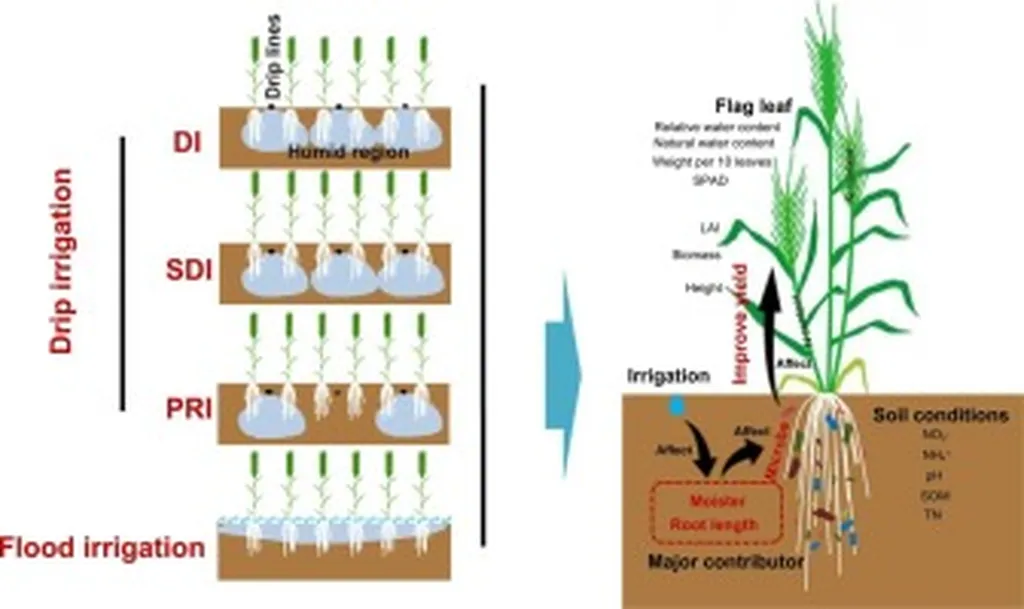In the vast, fertile expanses of the Huang-Huai-Hai Plain, a groundbreaking study led by Lingxin Zhang from the College of Agronomy and Biotechnology at Hebei Normal University of Science and Technology is reshaping our understanding of how drip irrigation influences wheat quality and yield. Published in the journal *Agricultural Water Management* (translated as *Water Management in Agriculture*), this research delves into the intricate relationship between water management and the molecular composition of wheat, offering profound implications for the agricultural and energy sectors.
Zhang and his team conducted field experiments on two high-gluten wheat varieties, ZM886 and ZM998, under five different irrigation treatments, ranging from rain-fed conditions to varying levels of drip irrigation. The results were striking. Compared to rain-fed conditions, drip irrigation increased grain yield by 5.37–12.45% for ZM886 and 7.01–17.19% for ZM998. “This isn’t just about increasing yield; it’s about optimizing water use to enhance both quantity and quality,” Zhang explained.
The study revealed that drip irrigation significantly affected dough processing quality by regulating the synthesis of glutenin macropolymers (GMP) in wheat grain. Dough stability time and tensile resistance, critical factors in bread-making, varied considerably with different irrigation levels. For instance, moderate irrigation (300 cubic meters per hectare) optimized dough stability time and tensile resistance, striking a delicate balance between dough quality and yield.
One of the most intriguing findings was how irrigation levels influenced the conversion of soluble glutenin protein (SGP) to glutenin macropolymer (GMP). Under rain-fed conditions, this conversion occurred at 26 days post-anthesis. However, higher levels of drip irrigation delayed the detection of high-molecular-weight glutenin subunits (HMW-GS), which are crucial for dough elasticity and strength. “This delay suggests that water management can be a tool to fine-tune the molecular composition of wheat, tailoring it to specific processing needs,” Zhang noted.
The study also highlighted that moderate irrigation levels increased free thiol groups and disulfide bonds, which are essential for the structural integrity of gluten. Conversely, excessive irrigation reduced these components, indicating that there is a sweet spot in water application that maximizes both yield and quality.
The implications of this research are far-reaching. For the agricultural sector, it offers a roadmap to optimize water use, enhancing both yield and the quality of wheat for processing. For the energy sector, which often relies on agricultural byproducts for biofuels, this research could lead to more efficient and sustainable practices. “By understanding how water affects the molecular composition of wheat, we can develop more resilient and productive crops, which in turn supports the entire agricultural value chain,” Zhang added.
As the world grapples with the challenges of climate change and water scarcity, this study provides a beacon of hope. It demonstrates that with careful management and a deeper understanding of plant biology, we can achieve sustainable agriculture that meets the demands of a growing population while preserving our precious resources.
In the words of Lingxin Zhang, “This research is just the beginning. It opens up new avenues for exploring how water management can be used to enhance crop quality and yield, paving the way for a more sustainable and productive future.”

